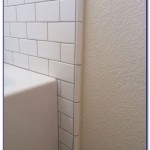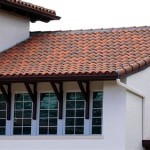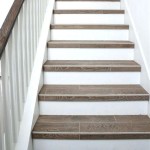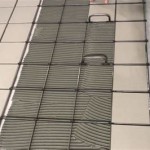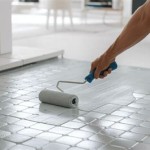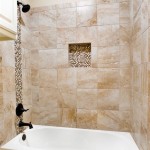What Board Do You Use For Tile?
Selecting the appropriate backer board is a crucial step in any tile installation project. The substrate upon which tile is laid significantly impacts the longevity, stability, and overall performance of the finished surface. While traditional materials like plywood and drywall have been used historically, modern backer boards offer superior characteristics that mitigate common tiling issues such as moisture damage, cracking, and bond failure. This article will explore the various types of backer boards available, their respective advantages and disadvantages, and factors influencing the selection of the ideal board for specific tiling applications.
The choice of backer board is directly related to the anticipated weight of the tile to be installed, the environment's moisture exposure, and underlying structural considerations. Neglecting these factors can result in costly repairs and replacements down the line. Understanding the different product options and their specific properties is essential for ensuring a successful and durable tile installation.
Understanding Different Types of Backer Boards
Several types of backer boards are commonly used in tile installation, each possessing unique characteristics that make them suitable for different applications. The most prevalent options include cement boards, gypsum boards with water-resistant coatings, and foam boards. Evaluating the properties of each type will aid in making an informed decision.
Cement Boards: Cement boards are composed of cement, aggregate, and reinforcing fibers, creating a dense, durable, and water-resistant substrate. They are available in varying thicknesses, typically ranging from ¼ inch to ½ inch. Cement boards are exceptionally resistant to moisture and are ideal for wet environments like bathrooms, showers, and kitchens. Their robust composition also makes them suitable for supporting heavy tiles such as large-format porcelain or natural stone.
The installation of cement boards requires proper fastening using screws specifically designed for cement board applications. Seams between sheets should be taped and treated with a cement-based thin-set mortar to create a seamless and waterproof surface. While cement boards offer exceptional performance, they are heavier and more difficult to cut than other types of backer boards, often requiring specialized tools.
Gypsum Boards with Water-Resistant Coatings: These boards consist of a gypsum core encased in a water-resistant paper or coating. They are lighter and easier to handle than cement boards, making them a popular choice for walls and ceilings in less demanding environments. These boards are often referred to as "green board" or "blue board" due to the color of their water-resistant facing.
However, it’s crucial to understand the limitations of these boards. While they resist moisture penetration to a certain extent, they are not waterproof and are not recommended for areas with direct water exposure, such as shower floors or tub surrounds. Prolonged exposure to moisture can cause the gypsum core to deteriorate, leading to tile failure. Proper installation involves taping and mudding the seams with a water-resistant joint compound.
Foam Boards: Foam boards, typically made of expanded polystyrene (EPS) or extruded polystyrene (XPS), offer a lightweight and waterproof alternative to traditional backer boards. They are available in various thicknesses and are easy to cut and shape using standard tools. Foam boards are often used in shower and bathtub installations due to their inherent waterproof properties. They can also provide an added layer of insulation.
Foam boards require specialized fasteners and installation techniques. They are typically bonded to the subfloor or framing using a modified thin-set mortar and secured with screws or washers. Seams are sealed with a waterproof sealant or tape. While foam boards offer excellent moisture resistance and ease of installation, they may not be as rigid or durable as cement boards, particularly when supporting heavy tile loads.
Factors Influencing Backer Board Selection
The selection of the appropriate backer board depends on several key factors, including the intended location of the tile installation, the type of tile being used, and the underlying structural support. Careful consideration of these factors will ensure the long-term performance and integrity of the tiled surface.
Location and Moisture Exposure: The level of moisture exposure is perhaps the most critical factor in backer board selection. Areas with frequent or prolonged water exposure, such as showers and bathrooms, require waterproof or highly water-resistant backer boards like cement boards or foam boards. In dry areas, such as living rooms or hallways, gypsum boards with water-resistant coatings may be sufficient, provided there is no risk of water damage.
The specific location within a bathroom also dictates the appropriate choice. Shower floors, tub surrounds, and areas around sinks are particularly susceptible to moisture and should be protected with waterproof backer boards. Walls above shower areas may be suitable for gypsum boards with water-resistant coatings, but careful attention must be paid to sealing seams and ensuring proper ventilation.
Tile Type and Weight: The type and weight of the tile being installed also influence the choice of backer board. Heavy tiles, such as large-format porcelain, natural stone, or mosaic tiles mounted on sheets, require a rigid and durable substrate capable of supporting the added weight. Cement boards are generally the preferred choice for these applications due to their superior strength and stability. Lightweight ceramic or porcelain tiles can be installed on gypsum boards with water-resistant coatings, provided the underlying framing is adequate to support the combined weight of the tile and backer board.
The size and format of the tile also play a role. Large-format tiles require a perfectly flat and even surface to prevent lippage (uneven edges between tiles). Cement boards and foam boards offer a more consistent and stable surface than gypsum boards, which can be prone to warping or sagging over time.
Substrate and Structural Support: The existing substrate and structural support must be evaluated before selecting a backer board. The backer board must be securely fastened to a stable and level surface. Uneven or unstable substrates can lead to cracking and tile failure. If the existing substrate is weak or damaged, it may need to be repaired or replaced before installing the backer board.
The framing behind the backer board must also be adequate to support the combined weight of the tile, backer board, and any associated mortar or adhesive. Joists and studs should be properly spaced and sized to prevent deflection or sagging. Inadequate framing can lead to structural problems and tile failure, regardless of the type of backer board used.
Installation Considerations and Best Practices
Proper installation of backer board is essential for ensuring a long-lasting and trouble-free tile installation. Following manufacturer's instructions and adhering to industry best practices is crucial for achieving optimal results. This includes proper fastening techniques, seam treatment, and waterproofing measures.
Fastening Techniques: Backer boards must be securely fastened to the underlying substrate using appropriate fasteners. Cement boards typically require cement board screws, which are designed to penetrate the hard surface of the board without causing it to crumble. Gypsum boards can be fastened with drywall screws, but it's essential to choose screws that are specifically designed for use with water-resistant boards. Foam boards often require specialized screws or washers to prevent them from pulling through the board.
The spacing of fasteners is also critical. Generally, fasteners should be spaced 6 to 8 inches apart along the edges of the board and 8 to 12 inches apart in the field. It's important to drive the fasteners flush with the surface of the board without overdriving them, which can damage the board and compromise its integrity.
Seam Treatment: Proper seam treatment is essential for creating a continuous and waterproof surface. Cement board seams should be taped with fiberglass mesh tape and treated with a cement-based thin-set mortar. Gypsum board seams should be taped with paper or fiberglass mesh tape and treated with a water-resistant joint compound. Foam board seams are typically sealed with a waterproof sealant or tape specifically designed for use with foam boards.
The taping and mudding process should be done in multiple coats, allowing each coat to dry completely before applying the next. The goal is to create a smooth, seamless surface that is resistant to moisture penetration. The seams should be sanded smooth after the final coat has dried to ensure a level surface for tile installation.
Waterproofing Measures: In wet environments, such as showers and bathrooms, additional waterproofing measures may be necessary to protect the backer board and underlying structure from water damage. Liquid-applied waterproofing membranes, sheet membranes, and waterproof sealants can be used to create a barrier against moisture penetration. These products should be applied according to the manufacturer's instructions, paying particular attention to seams, corners, and penetrations.
The selection of the appropriate waterproofing system depends on the type of backer board being used and the specific requirements of the installation. Cement boards and foam boards are generally compatible with a wide range of waterproofing products, while gypsum boards may require specialized waterproofing systems that are designed to adhere to the water-resistant facing.
In summary, selecting the appropriate backer board for tile installation requires careful consideration of several factors, including the intended location, the type of tile being used, and the underlying structural support. Cement boards, gypsum boards with water-resistant coatings, and foam boards each offer unique characteristics that make them suitable for different applications. Proper installation techniques and adherence to industry best practices are essential for ensuring a long-lasting and trouble-free tile installation.

How To Prepare A Subfloor For Tile Installation The Home Depot

Easily Install Cement Board To Prep For Tile Installation

Blog Expert Advice How To Tile Onto Wood Plywood Or Chipboard

How To Prepare A Subfloor For Tile Installation The Home Depot

Blog Expert Advice How To Tile Onto Wood Plywood Or Chipboard

How To Prepare A Subfloor For Tile Installation The Home Depot

Install A Ceramic Tile Floor

How To Install Cement Backer Board For Floor Tile Installation The Home Depot

Waterproofing How Do I Correctly Install Ceramic Floor Tile Home Improvement Stack Exchange

What Is Backer Board Where Do You Use It Home Tips For Women
Related Posts



